Suds manual from AI
It's only a couple or three weeks since I reviewed the Formpave brochures and grandly declared the SUDS publication to be " the most comprehensive and well-designed explanation of the mysterious ways of permeable paving that I've seen" . Then Aggregate Industries slip me a copy of their new SUDS manual for "Sustainable Drainage Systems", and I've spent a sizable chunk of the past week absorbing it all, allowing it to permeate the neural pathways and, quite frankly, bedazzle me with its depth of coverage and attention to detail.
A direct comparison with the Hanson Formpave brochure is not justified, and those readers equipped with the advanced model of eagle-eyes may have spotted why: this is Aggregate Industries (AI), nor just Charcon or Bradstone or Bardon, but the whole clan, putting all their Suds and drainage products up for consideration, rather than just the in-house permeable block paving, which happens to be Charcon “Infilta”.
And so the whole manual is given over to examining an incredibly wide range of permeable surfaces, and to provide a fuller understanding of the why, the where and the how, this ample 100 page publication starts with a gentle and succinct explanation of the principles and the types of solutions offered by AI: the Infilta block paving, the PermaChannel linear system, the special Bardon DrainAgg, DrainAsphalt and HyDrain, GrassGrid, PermaVoid and all the others. This is the most comprehensive array of suds products currently available from one source, which reflects the wide range of activities and technologies that co-exist beneath the extra-large AI umbrella.
The product overview is followed by a whopping 33 page design section. This is the real meat of the manual, covering every aspect of the design process, including hydraulic design, guidance on the choice between attenuation or infiltration, worked examples of the calculations used to determine outflow and an extremely detailed examination of the structural design of the various pervious pavement systems.

The section is rounded off with a very thorough assessment of the potential for pollution control, with brief examination of the use and benefits of geo-textiles and geo-membranes, and the challenges presented by sloping sites.
A short section looking at suds in sport and leisure application is followed by eight pages of installation guidance, which, in comparison to the foregoing design section, seems lightweight, but it is debatable whether a manual such as this is the pace for highly detailed construction methodology; further, given the eye-boggling range of sites and applications, could *any* design manual do justice to the multifarious construction and installation practices that will be used with sustainable drainage systems?
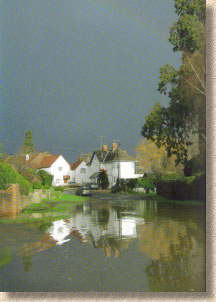
This is, perhaps, exemplified by the next section which contains five short case studies, all commercial and/or public projects, but well-chosen to illustrate the potential of suds. A smaller-scale project would have made a welcome addition – perhaps a driveway or small car park. Projects covering several thousands of square metres always look impressive as case studies, as they carry an implicit but unstated endorsement: “if it's good enough for a Park and Ride scheme….”, but there is a risk that designers and specifiers unfamiliar with suds may take away the impression that this is a technology of too large a scale for residential and small commercial projects, when these are just the type of projects that need to adopt suds thinking if there's to be a significant change in public perception.
A minor quibble, and one that can be easily forgotten when the voluminous Appendices that follow are considered. These five tracts are simply invaluable to anyone involved with or considering suds and/or sustainability for a hard-landscaping project. The first covers legislation and documentation with encyclopaedic exactitude. Appendix 2 presents an exhaustive array of cross-sections covering two dozen of the more probable permutations. The next appendix features a series of “ready reckoners” for calculating various parameters that will be required for proper design, while the fourth lists the technical specification of the recommended AI products. The fifth and final gathers together all those invaluable snippets that don't quite fit in elsewhere: product life, winter maintenance, clogging and more.
Back in the middle ages when I was forced to spend my time in a classroom when I'd much rather have been on a building site, we were taught that any treatise worth its salt would close with a glossary, a bibliography and an index, which is exactly what will be found on the final few pages of this publication. The glossary is a godsend to any student or designer new to the world of suds, while the bibliography makes for a superbly stocked bookshelf.
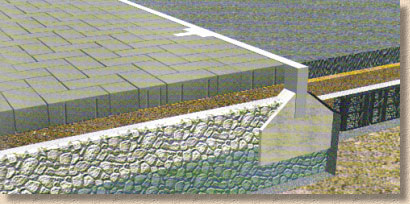
Overall, the word “invaluable” comes to mind time and time again. This is a cleverly conceived, well planned and brilliantly executed publication that will have other manufacturers kicking themselves at its purview. The space afforded to the various sections is generous, with no sense of it being bloated or over-stuffed. The text is largely free of jargon and reads well. The diagrams are clean and lucid but not as visually attractive as some seen elsewhere. The photographs are well-composed and used wisely, emphasising and illustrating the text rather than simply filling would-be blank space.
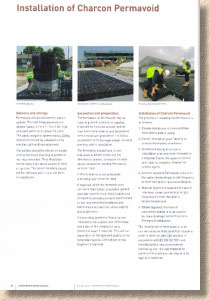
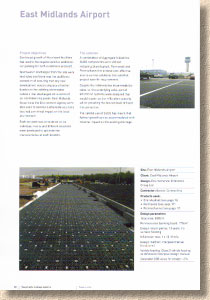
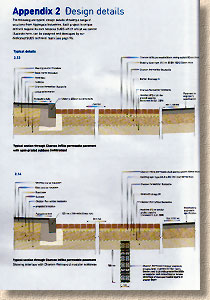
There's a good hour (and more) of a read in this manual, and I find that fact immensely rewarding. Many of the publications that land on my desk for review are “flick-and-scan” tracts, ten minute coffee-break fodder. This manual represents a full lunchtime of study, at the very least, and it would be a lunchtime well spent. It has a 'storyline' a logical sequence starting with why, leading on to how and making frequent reference to what before reaching a practical conclusion. It makes a compelling and convincing case for suds technology, and adroitly advocates the use of the various AI products wherever possible. It addresses the needs of the designer, the student, the contractor and the interested bystander. I don't think any of us can ask for much more than that!





